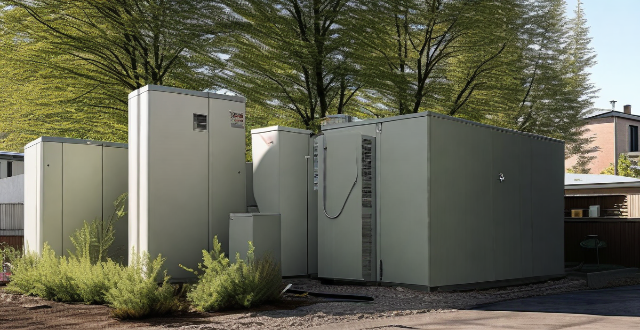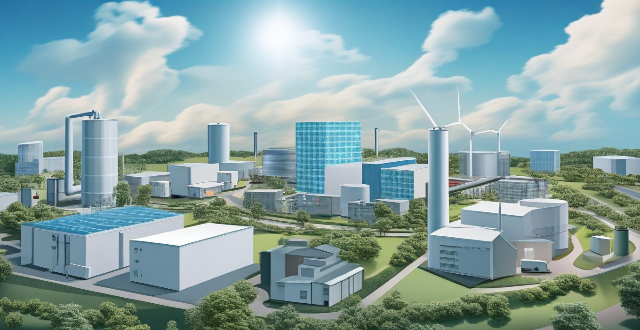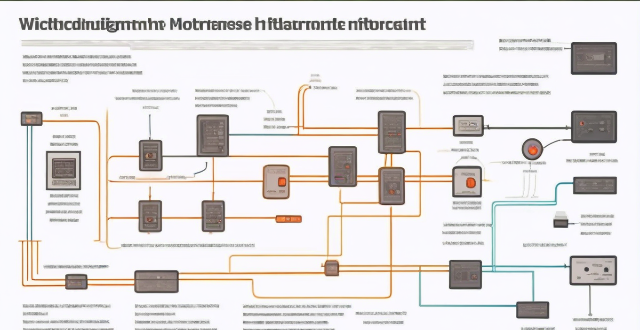System Efficiency

How do distributed energy systems contribute to energy efficiency and sustainability ?
Distributed energy systems (DES) play a significant role in improving energy efficiency and sustainability. DES refers to a comprehensive energy utilization system located near the end-users, which can operate independently or in conjunction with the grid. It encompasses various technologies such as combined heat and power (CHP), renewable energy, energy storage, and fuel cells. Here is a detailed exploration of how distributed energy systems contribute to energy efficiency and sustainability: 1. **High Energy Efficiency** - **Combined Heat and Power (CHP)**: CHP systems generate both electricity and heat simultaneously, providing an overall efficiency of up to 80%-90%. This is considerably higher than traditional centralized power plants, which typically have an efficiency of around 40% for advanced coal-fired power plants. - **Energy Cascade Utilization**: Distributed energy systems utilize energy cascading, where the byproducts of one process are used as inputs for another. For example, waste heat from electricity generation is used for heating or cooling, maximizing energy utilization. - **Reduced Transmission Losses**: Due to their proximity to consumers, DES reduces the need for long-distance transmission of electricity, thereby minimizing transmission losses compared to centralized power systems. 2. **Environmental Protection** - **Low Emissions**: Distributed energy systems often use clean energy sources like natural gas, solar, and wind, which have lower emissions compared to traditional coal or oil combustion. - **Renewable Energy Integration**: Distributed energy systems can easily integrate renewable energy sources like solar panels and wind turbines, promoting the use of sustainable energy. - **Waste Reduction**: By using waste heat and integrating multiple forms of energy production, DES helps reduce energy waste and its associated environmental impact. 3. **Economic Benefits** - **Cost Savings**: Distributed energy systems can reduce energy costs by decreasing transmission and distribution expenses. They also provide more stable energy prices compared to fluctuating grid rates. - **Infrastructure Investment Reduction**: Since DES requires less infrastructure compared to large-scale power plants and transmission networks, it can lead to significant cost savings in infrastructure investment. - **Market Potential**: The development of DES has opened up new markets and business opportunities, especially in the sale and maintenance of distributed energy equipment. 4. **Enhanced Reliability and Resilience** - **Decentralized Architecture**: The decentralized nature of DES means that if one system fails, others can still operate, ensuring continuous energy supply. - **Storm and Disaster Resilience**: During large-scale disasters or extreme weather events, DES can serve as a crucial energy source when centralized power systems fail. 5. **Promotion of Smart Grid Development** - **Integration with Smart Grids**: Distributed energy systems can be integrated with smart grids, enabling two-way flows of electricity and information, which enhances overall grid efficiency and responsiveness. - **Demand Response Management**: DES allows for better demand response management, where consumption can be adjusted based on real-time supply and demand conditions, further enhancing energy efficiency. Additionally, there are several challenges and considerations for the widespread adoption of distributed energy systems: - **Technical Challenges**: The integration of multiple energy sources requires advanced technical expertise and sophisticated control systems. - **Policy Support**: While policies increasingly support DES, more comprehensive regulations and incentives are needed to encourage wider adoption. - **Economic Viability**: Although DES offers economic benefits, the initial investment can be high, which may limit access for some users. In summary, distributed energy systems contribute significantly to energy efficiency and sustainability through high energy utilization efficiency, environmental protection, economic benefits, enhanced reliability and resilience, and promotion of smart grid development. Despite certain challenges, the advantages of DES make it a critical component of future energy strategies.

How can circular economy policies improve resource efficiency ?
Circular economy policies enhance resource efficiency by promoting sustainable practices like product redesign, encouraging reuse and sharing, maximizing recycling, reducing waste, supporting innovation, and building capacity for sustainable practices.

How do international standards and certifications affect industrial energy efficiency practices ?
International standards and certifications significantly influence industrial energy efficiency practices by setting uniform benchmarks, driving innovation, enhancing reputation, promoting transparency, supporting regulatory compliance, and leveraging resource efficiency. These standards provide a framework for continuous improvement, drive technological advancements, expand market opportunities, ensure accountability, align with policies, reduce waste, and offer cost benefits. As sustainability becomes a global priority, adherence to these standards will be crucial for industrial competitiveness and success.

How can Smart Grid Technology improve energy efficiency ?
Smart grid technology is transforming the energy sector by integrating advanced communication technologies, automated controls, and innovative sensors to create a more efficient, reliable, and sustainable energy system. Key features of smart grid technology include Advanced Metering Infrastructure (AMI), Distributed Energy Resources (DERs), Demand Response (DR) Programs, and Electric Vehicles (EVs). The benefits of smart grid technology on energy efficiency include improved load management through peak shaving, demand side management, and dynamic pricing; increased renewable energy integration through microgrids, grid balancing, and energy storage systems; optimized transmission and distribution through self-healing networks, predictive maintenance, and reduced transmission losses; and enhanced customer engagement and participation through consumer education, incentives for energy efficiency, and community solar programs. Overall, smart grid technology offers numerous opportunities to improve energy efficiency across various sectors of the energy industry while transitioning towards a more sustainable future with reliable and efficient energy delivery for all consumers.

How does a speed controller contribute to energy efficiency in machinery ?
Speed controllers enhance energy efficiency in machinery by reducing energy consumption, improving motor efficiency, optimizing processes, and minimizing standby power use.

What is the relationship between energy efficiency and climate change, and how can it contribute to energy security ?
Energy efficiency is crucial for mitigating climate change and enhancing energy security. It reduces greenhouse gas emissions by decreasing fossil fuel consumption, lowering energy production needs, and promoting renewables. Energy efficiency also contributes to energy security by diversifying sources, reducing costs, and improving system reliability.

How can architects and designers incorporate building energy efficiency standards into their work ?
Incorporating Building Energy Efficiency Standards into Architectural and Design Work: - Understanding Energy Efficiency Standards: Research current standards, analyze local climate data. - Design Strategies for Energy Efficiency: Orientation and site layout, insulation and envelope performance, HVAC, lighting and electrical systems, water efficiency. - Material Selection: Sustainable materials, recycled content. - Technology Integration: Building automation systems, solar technology. - Collaboration and Communication: Team collaboration, client education. - Post-Occupancy Evaluation: Monitor performance, feedback loop.

How do smart grids help in achieving better energy efficiency ?
Smart grids, through their advanced digital communication technology, play a pivotal role in enhancing energy efficiency. They achieve this by optimizing power generation and distribution, managing energy consumption effectively, improving system reliability, encouraging sustainable practices, and leveraging data analytics. Features like demand response, distributed generation, smart meters, load balancing, peak shaving, self-healing capabilities, predictive maintenance, dynamic pricing, and electric vehicle integration contribute to these efficiency improvements. As we move towards a more connected future, smart grids will continue to drive efforts towards a more energy-efficient global landscape.

What are the current building energy efficiency standards ?
The text discusses building energy efficiency standards, which are regulations and guidelines designed to reduce energy consumption. These standards promote sustainable development, reduce greenhouse gas emissions, and improve indoor air quality. The text lists seven key areas for improving energy efficiency: insulation and air tightness, heating, ventilation, and air conditioning systems, lighting systems, renewable energy sources, water efficiency, building materials and construction practices, and energy management and monitoring. Each area includes specific strategies and technologies that can be employed to increase energy efficiency.

What is the efficiency rate of an internal rotor motor compared to other types of motors ?
The efficiency rate of an internal rotor motor compared to other types of motors depends on various factors such as design, size, application, materials, and control system. Internal rotor motors typically have higher efficiency rates than external rotor motors due to their compact design and reduced air gap between the rotor and stator. However, it is essential to consider the specific requirements of the application when choosing a motor type, as other factors such as brushless DC (BLDC) motors and permanent magnet synchronous motors (PMSM) are also known for their high efficiency rates.

How does regenerative braking contribute to the efficiency of an EV ?
Regenerative braking in electric vehicles is a technology that converts the kinetic energy usually lost during braking into electricity, which can be stored in the battery and used to power the vehicle. This process significantly contributes to the efficiency of an electric vehicle (EV) by reducing energy consumption and extending the driving range. The key points include energy recovery, battery lifespan, reduced wear and tear, and improved fuel economy. The process involves detecting deceleration, motor acting as a generator, energy storage, and brake blending. The benefits of regenerative braking include increased efficiency, longer range, less battery depletion, and environmentally friendly. Regenerative braking plays a crucial role in enhancing the efficiency of electric vehicles by recycling energy that is typically lost during conventional braking methods.

How does a multi-motor drive system work ?
The text explains how a multi-motor drive system works, its components, and benefits. It describes the process of power conversion, control signals, motor operation, mechanical transmission, and feedback adjustment in such systems. The advantages include improved efficiency, increased redundancy, and enhanced control.

What are the benefits of using a combination motor drive system ?
Combination motor drive systems offer benefits such as improved efficiency, increased reliability, flexibility, and enhanced control. These systems combine the advantages of different types of motors to create a more efficient and reliable drive system. They are ideal for a wide range of applications and can help businesses save money on energy costs while reducing downtime and maintenance requirements.

What are the advantages of using a single motor drive system ?
A single motor drive system is a type of electric motor control system that uses only one motor to power a machine or equipment. This system has several advantages over other types of drive systems, including simplified design and maintenance, improved efficiency and performance, increased reliability and longevity, and greater flexibility and versatility. These benefits make it an attractive option for many industrial applications where precise control and efficient operation are essential.

What are the key factors to consider when selecting a permanent magnet motor for a specific application ?
When selecting a permanent magnet motor for a specific application, several key factors must be considered to ensure optimal performance and efficiency. These factors include application requirements, efficiency and performance, size and weight, temperature range and cooling, control and feedback systems, cost and budget, reliability and durability, and compatibility with other system components. By carefully considering these key factors when selecting a permanent magnet motor for your specific application, you can ensure that you choose a motor that meets your needs in terms of performance, efficiency, size, cooling requirements, control options, cost, reliability, and compatibility with other system components.

How does a distributed energy system work ?
A distributed energy system (DES) is a decentralized approach to power generation and distribution that utilizes renewable energy sources, energy storage devices, and smart grid technologies. The system works by generating electricity locally from renewable sources, storing excess energy for later use, and distributing power efficiently within a local area. This setup enhances efficiency, reliability, and sustainability while potentially reducing costs. DESs offer flexibility and adaptability to changing energy needs and technological advancements, positioning them as a crucial element in the future of energy infrastructure.

What is a distributed energy system ?
Distributed energy systems (DES) are integrated systems that generate, store, and manage energy near the point of consumption. They typically include renewable energy sources, energy storage devices, and control systems. The primary goal is to optimize energy production and consumption while minimizing environmental impact and enhancing energy security. Key features of DES include decentralized generation, renewable energy sources, energy storage, intelligent control systems, flexibility, and scalability. Benefits of DES include increased energy efficiency, improved reliability, reduced environmental impact, enhanced energy independence, and cost savings. Examples of DES include residential solar PV systems, commercial buildings with cogeneration, microgrids, and community energy projects.

How do I choose the right energy-efficient lighting system for my needs ?
Choosing the right energy-efficient lighting system involves assessing your needs, considering options like LED and solar lighting, evaluating energy efficiency ratings, and factoring in maintenance costs.

Are there any specific diets that enhance exercise efficiency ?
Yes, there are specific diets that can enhance exercise efficiency. These include a high-carbohydrate diet for energy, a low-fat diet for weight management and cardiovascular health, a high-protein diet for muscle recovery and maintenance, and a plant-based diet for optimal nutrient intake. Examples of foods in each diet category are provided, along with the benefits they offer for exercise efficiency. It is recommended to consult with a healthcare professional before starting any new diet plan.

What are the benefits of using a distributed energy system ?
Distributed energy systems (DES) have become increasingly popular due to their numerous benefits. These systems can include solar panels, wind turbines, micro-hydro plants, and other renewable energy sources. The key benefits of using a distributed energy system are increased energy efficiency, lower energy costs, improved reliability and resilience, environmental sustainability, encouragement of local economy and job creation, promotion of energy independence and security, and flexibility and scalability. Adopting a distributed energy system brings numerous benefits ranging from increased efficiency and cost savings to improved reliability, environmental sustainability, economic development, and energy security.

How does a carbon credit system work ?
A carbon credit system is a market-based approach that incentivizes companies, organizations, and individuals to reduce their greenhouse gas emissions. It works by setting emission reduction targets, generating carbon credits for verified emission reductions, allowing the trading of these credits, and using them for regulatory compliance or offsetting emissions. This system fosters economic efficiency, flexibility, and innovation while encouraging global cooperation on climate action. However, challenges such as ensuring permanence of reductions and maintaining system integrity must be addressed to ensure its effectiveness.

What are the key factors to consider when designing a combination motor drive system ?
Designing a combination motor drive system requires careful consideration of several key factors, including load requirements, efficiency and performance, control strategies, reliability and safety, and environmental considerations. Load requirements play a significant role in determining the type and size of the motor required for the drive system, while efficiency and performance are critical factors to consider when designing a motor drive system. Control strategies used in the motor drive system are also crucial, with common strategies including open-loop control, closed-loop control, and adaptive control. Reliability and safety are essential factors to consider when designing a motor drive system, with redundancy, fault detection and protection, and safety interlocks being key considerations. Finally, environmental considerations should also be taken into account when designing a motor drive system, with temperature, humidity, vibration, and shock loads being important factors to consider.

How have building energy efficiency standards evolved over time ?
The evolution of building energy efficiency standards has been significant over the years, with a focus on reducing energy consumption and environmental impact. Early beginnings saw little consideration for energy consumption, leading to high utility bills and greenhouse gas emissions. The rise of energy conservation in the 1970s led to the development of the first building energy efficiency standards, focusing on measures such as improved insulation and efficient heating and cooling systems. The advent of green buildings in the 1990s brought new standards that minimized environmental impact through the use of renewable energy sources and sustainable materials. Technology has played a significant role in improving energy efficiency, with advances such as smart thermostats and LED lighting. Looking to the future, there is likely to be a greater emphasis on reducing energy consumption in buildings, leading to stricter standards and the development of new technologies. Overall, building energy efficiency standards have evolved to become an essential part of modern building design and construction.

How has the adoption of Industry 4.0 technologies influenced energy efficiency in manufacturing ?
Industry 4.0 technologies significantly impact energy efficiency in manufacturing by enabling precision and optimization, data-driven decision making, resource management, promoting sustainability, and enhancing employee engagement. These advancements contribute to a future where smart manufacturing and sustainability are intertwined.

Why is the western political party system not suitable for China and the world contribution of China's political party system

How can governments promote energy efficiency through policies and incentives ?
Energy efficiency is crucial for sustainable development, and governments can drive it through various policies and incentives. Implementing energy efficiency standards like MEPS and labeling programs, providing financial incentives such as tax credits and grants, enforcing regulatory measures including energy audits and carbon pricing, enhancing public awareness and education, supporting R&D, and fostering international cooperation are effective strategies. These measures can lead to a more sustainable future with reduced environmental impact and increased economic benefits.

What are the challenges faced when designing a multi-motor drive system ?
The article discusses the challenges of designing a multi-motor drive system, including coordination between motors, power distribution, and synchronization. It emphasizes the importance of control algorithms, communication systems, mechanical design, efficiency optimization, power management, thermal management, timing control, feedback mechanisms, and mechanical design in achieving proper operation of the system. The article concludes that careful consideration of these factors is crucial for creating efficient and effective multi-motor drive systems.

How do building energy efficiency standards affect the construction industry ?
Building energy efficiency standards have a significant impact on the construction industry by affecting cost implications, design philosophy, regulatory compliance, and market trends. These standards require higher initial costs due to advanced technologies and materials but offer long-term benefits like reduced energy consumption and maintenance costs. They also shift the focus of design towards energy performance and sustainability, leading to integrated design processes and innovative solutions. Compliance with these standards is crucial to avoid penalties and legal issues, while certifications like LEED or WELL can provide a competitive advantage. Finally, building energy efficiency standards influence market trends by driving demand for sustainable construction methods and educating clients about their benefits.

How efficient are modern tidal and wave energy conversion systems ?
Modern tidal and wave energy conversion systems aim to harness the power of oceanic movements for electricity generation. The efficiency of these systems is a critical factor in determining their viability as significant contributors to the global energy mix. Tidal energy conversion systems operate by capturing the kinetic energy from the rise and fall of tides, while wave energy conversion systems extract energy from the motion of ocean waves. Both tidal and wave energy conversion systems face similar challenges that affect their efficiency, including cost, environmental concerns, and technical hurdles. Continued research, technological advancements, and policy support will be crucial in improving their efficiency and ultimately realizing their potential as significant contributors to our clean energy future.

What is an ecological tax system and how does it work ?
An ecological tax system is a framework designed to promote environmental sustainability by modifying tax structures to encourage eco-friendly behaviors and discourage activities that harm the environment. The primary goal of such a system is to internalize the external costs of pollution and resource depletion, thereby making environmentally harmful practices more expensive and sustainable practices more economically attractive. At the core of an ecological tax system are Pigouvian taxes, named after the economist Arthur Cecil Pigou. These taxes are levied on activities that generate negative externalities, such as pollution. By imposing a tax equal to the marginal social damage caused by these activities, the government can correct market failures where the private costs to producers do not reflect the true social costs. This encourages polluters to reduce their emissions or shift towards cleaner technologies. In addition to taxes on negative externalities, ecological tax systems often include subsidies for positive environmental behaviors. For example, governments might offer tax credits or rebates for renewable energy installations, green technology adoption, or energy efficiency improvements. These incentives make it financially advantageous for individuals and businesses to adopt sustainable practices. An ecological tax system may also involve revenue-neutral tax reform, where increases in environmental taxes are offset by reductions in other taxes, such as income or payroll taxes. This approach aims to make the overall tax burden on society constant while encouraging environmentally friendly behaviors. Feed-in tariffs (FiTs) are another component of some ecological tax systems. These are long-term contracts guaranteeing renewable energy producers a fixed price for the electricity they feed into the grid. FiTs provide a stable income for renewable energy projects, reducing investment risk and promoting the development of clean energy sources. Carbon pricing mechanisms, such as carbon taxes or cap-and-trade systems, are integral parts of many ecological tax systems. These policies put a price on carbon emissions, making it more expensive for companies and consumers to use fossil fuels. This encourages a shift towards lower-carbon alternatives and supports investments in carbon capture and storage technologies. Some ecological tax systems apply differentiated taxes based on the environmental impact of products or services. For instance, gasoline taxes might be higher for fuels with a greater carbon content, promoting the use of cleaner burning fuels. Similarly, taxes on waste disposal could be adjusted based on the type of waste and its potential environmental harm. While the concept of an ecological tax system is straightforward, implementation faces several challenges: - Political Will: Governments must be willing to prioritize environmental concerns over short-term political gains. - Economic Impact: There's a need to balance environmental goals with economic growth and job creation. - Equity Considerations: Policies should not disproportionately burden low-income groups or exacerbate social inequalities. - International Cooperation: Many environmental issues are global, requiring coordinated international efforts. Despite these challenges, implementing an ecological tax system offers numerous benefits: - Environmental Protection: It directly addresses pollution and resource depletion. - Market Efficiency: It corrects market failures related to environmental externalities. - Innovation Stimulus: It encourages research and development of green technologies. - Public Health Improvements: Reduced pollution leads to better health outcomes. - Sustainable Economic Growth: It fosters industries that are sustainable in the long run. In summary, an ecological tax system is a comprehensive approach to integrating environmental considerations into fiscal policy, aiming to promote sustainable development through a mix of taxes, subsidies, and regulatory measures.